Kedarnath Jyotirling (Hindi:केदारनाथ ज्योतिर्लिंग, Sanskrit:केदर्णतः जय्होतिर्लिन्ग) is one of the best known Shivasthalams in India and is considered to be one of the most sacred pilgrimage centers of the country, located in the lofty Himalayas. It is revered as one of the 12 Jyotirlingams – the Northern most one, – Haridwar District,Himalayas, Uttarakhand.
Kedarnath Temple - Abstract
Kedareshwar: Jyotirling
Important Festivals:
-
Maha Sivaratri
-
Badri-Kedar-Ustav
-
hravani Annakoot Mela
-
Samadhi Puja
.
Owing to the severe weather conditions, the Kedarnath Temple is open only for six months between April /May till the Kartik Purnima, which falls on the second day after Diwali festival. During the winters, the shrine is submerged in snow. The idols are brought to Ukhimath and worshipped there for six months. The idols are reinstated at Kedarnath around last week of April or first week of May and doors of the temple are thrown open for public.
Kedarnath Temple Timings
General Darshan is from 6 am to 2 pm in the morning and from 5 pm to 8 pm in the evening.
Special Pooja can be performed before the general darshan in the morning by making a booking with the Temple Committee
Shingar Darshan is from 5 pm onwards
Aarti is performed at 6:45 pm.
.
- Kedarnath is situated in the Garhwal Himalayas of the Uttarakhand state of India. The Garhwal Himalayas which have been a favorite locale for the numerous mythology of the Puranic period have nurtured civilization from the small historic events. Traditionally Garhwal was known as Uttarakhand. Excavations revealed that it was once the part of the Mauryan Empire.
- Mention in the 7th-century travelogue of Huen Tsang. Adi Shankaracharya, a spiritual reformer, is the ame with whom the name of Garhwal is always linked. During 8th century, he visited the snow-laden heights of Garhwal and established a math named Joshimath. He also resorted some of the most sacred shrines, including Badrinath and Kedarnath.
- 15th century when the history of Garhwal as one unified whole begun. During that time King Ajai Pal merged the-52 separate principalities, each with its own garh or fortress. For about 300 years Garhwal remained a single region with its capital Srinagar situated on the banks of river Alaknanda.
- Later in 1803 the Garhwal region was invaded by the Gorkhas of Nepal. Amar Singh Thapa was made Governor of this region. The Gorkhas came into contact with the British power. The troubles at borders prompted the British rulers to invade Garhwal. Later in 19th century, the Gorkhas attacked Garhwal and coerced the rulers of Garhwal to move down to the plains of Rishikesh, Haridwar and Dehradun. With the victory of Gorkhas in the battle their dominion was established in the Garhwal region. The region was then annexed by the British and they then divided it into eastern and western Garhwal. The eastern region of Garhwal was kept by the British while the western part, lying to the west of the river Alaknanda with the exception of Dun, was handed over to Sudarshan Shah of Garhwal dynasty. This state came to be known as Tehri Garhwal. Later his successors Pratap Shah, Kirti Shah and Narendra Shah established their capital at Pratap Nagar, Kirti Nagar and Narendra Nagar respectively and ruled over this region from 1815 to 1949.
- Later on Tehri was merged with the state of Uttar Pradesh in 1949. Being a scattered region, Tehri posed a number of problems for advance developments. Seeing this Uttar Pradesh Government, on 24th February 1960, separated its one tehsil and later gave a status of a separate district named as Uttarkashi. Tehri Garhwal in the 60s extended much farther east than it currently does. The new district acquired importance because of the two very significant pilgrimage places within this region: Gangotri and Kedarnath. In the year 1997, most of the eastern portions of Tehri Garhwal were detached. Later these portions when merged with the portions of the districts of Pauri Garhwal and Chamoli formed Rudraprayag district.
- The following were the rulers who ruled this place:The Pals- 823 AD- 1947 ADThe Garhwals- Before 17th centuryThe Mughals- Around 17th centuryThe Gorkhas- From 1803The British- From 1814The Shahs- 1815- 1949Kedarnath is renowned as one of the four Char Dhams in India. The Jyotirling at Kedarnath range stands as one of the twelve ‘Jyotirlingas’ of Kedar or Lord Shiva. This place is of immense spiritual significance.
Architecture:
This temple, over a thousand years old is built of massive stone slabs over a large rectangular platform. Ascending through the large gray steps leading to the holy sanctums we find inscriptions in Pali on the steps.
The present temple was built by Adi Shankaracharya.The inner walls of the temple sanctum are adorned with figures of various deities and scenes from mythology. The origin of the revered temple can be found in the great epic – Mahabharata.. The temple, believed to be very ancient, has been continually renovated over the centuries. It is situated at an altitude of 3,581 mt. It is a 14 km trek from Gaurikund.
The first hall contains statues of the five Pandava brothers, Lord Krishna, Nandi, the vehicle of Shiva and Virabhadra, one of the greatest guards of Shiva. An unusual feature of the temple is the head of a man carved in the triangular stone fascia of the temple. Such a head is seen carved in another temple nearby constructed on the site where the the marriage of Shiva and Parvati was held. The Spire of the Kedarnath temple with the Kedarnath Mountain in the background the temple is devoted to Siva.
.
Committee:
The number of committee members is 17. They comprise:
- Members selected by the Uttaranchal Legislative Assembly 3
- Member selected by the Zilla Parishad of Zilla Garhwal 1
- Member selected by the Zilla Parishad of Zilla Tehri 1
- Member selected by the Zilla Parishad of Zilla Chamoli 1
- Member selected by the Zilla Parishad of Zilla Uttarkashi 1
- Members nominated by the State Government 10
President and Vice chairman of the committee are nominated by the State Government.
The Present Committee:
Following are the Chairman and members of the present committee:-
- Shri Ganesh Godiyal, M.L.A
- (Chairman)
- Smt. Madhu Bhatt
- (Vice Chairman)
- Shri Rakesh Dhyani
- (Member)
- Shri Dayaram Purohit
- (Member)
- Shri Gulab Singh Negi
- (Member)
- Shri Harish Dimri
- (Member)
- Smt. Anita Jina
- (Member)
- Shri Keshav Prasad Thapliyal
- (Member)
- Shri Rajendra Prasad Dabral
- (Member)
- Smt. Sunita Shukla
- (Member)
- Shri Chandra Kishore Maithani
- (Member)
- Shri Bachan Singh Rawat
- (Member)
Contact Information:
Shri Badrinath – Shri Kedarnath Temples Committee
Maa Chandra Badni Temple, Near Kargi Chowk & Oberoi Nissan Motors, Kargi Grant, Haridwar By-pass road, Dehradun, Uttarakhand – 248001. INDIA.
Telefax: + 91 – (135) 2627122
E-mail: admin@badarikedar.org; chairman@badarikedar.org; pramod@badarikedar.org
Visit our Web Site: www.badarikedar.org
.
By Air: Jolly Grant Airport is the nearest Airport to Kedarnath situated at a distance of 238kms. Jolly Grant Airport is well connected to Delhi with daily flights. Gaurikund is well connected by motorable roads with Jolly Grant Airport. Taxis are available from Jolly Grant Airport to Gaurikund.
By Rail: The nearest railway station to Kedarnath is Rishikesh. Rishikesh railway station is situated 216kms before Kedarnath on NH58. Rishikesh is well connected by railway networks with major destinations of India. Trains to Rishikesh are frequent. Gaurikund is well connected by motorable roads with Taxis and buses are easily available from Rishikesh to Gaurikund.
By Road: Gaurikund is the point where road to Kedarnath ends and an easy trek of 14km commence. Gaurikund is well connected by motorable roads with major destinations of Uttarakhand and northern states of India. Buses to Rishikesh and Srinagar are available from ISBT Kashmiri Gate. Buses and Taxis to Gaurikund are easily available from major destinations of Uttarakhand like Dehradun, Rishikesh, Haridwar, Pauri, Tehri, Uttarkashi, Srinagar, Chamoli etc. Gaurikund lies on National Highway 109 which connects with Kedarnath
Kedarnath can be reached easily by helicopter services, car, taxi or by luxury bus coaches. Get the latest updated road driving directions from Delhi Haridwar Rishikesh Rudraprayag Badrinath, trains flights schedules to the nearest railway station and airport to Kedarnath at euttaranchal travels.
Legend goes that Nara and Narayana – two incarnations of Vishnu performed severe penance in Badrikashraya of Bharat Khand, in front of a Shivalingam fashioned out of earth. Pleased with their devotion, Lord Shiva appeared in front of them and said that they may ask for a boon. Nar and Narayan requested Shiva to take up a permanent abode as a Jyotirlingam at Kedarnath so that all people who worship Shiva shall be freed from their miseries.
According to legend, the Pandavas after having won over the Kauravas in the Kurukshetra war, felt quilty of having killed their own relative and sought the blessings of Lord Shiva Moksh.
At the end of their life, the Pandavas decided to give up their kingdom and go to the Himalayas and meditate on their favourite deity, Lord Shiva. So they set out accompanied by their wife, Draupadi. When they reached the place called Rudraprayag, they thought they had a glimpse of Lord Shiva. They tried to chase him but he took on the form of a buffalo and dashed off towards the north. They followed in hot pursuit and eventually caught up with him at the place that is now known as Kedarnath. The Lord now dived into the earth. Only the hind portion of the buffalo was sticking out. This was caught by one of the brothers called, Bhima. But pull as he might, he couldn’t get the rest of the buffalo out of the ground. The hump now turned into a Shiva Lingam and remained at this place. Each of the other parts appeared at four other places and came to be collectively known as the Panch Kedars or the five Kedars. All these lie in the Garwal Himalayas in the modern state known as Uttranchal.
Lord Shiva manifested in the form of Jyotirlingam or the cosmic light. Kedarnath is highest among the 12 Jyotirlingas. This ancient and magnificent temple is located in the Rudra Himalaya range.
Significance of Kedarnath Jyotirlinga:
- The lingam at Kedarnath, unlike its usual form, is pyramidal and is regarded as one of the 12 Jyotirlings.
- The pandavas after having won over the kauravas in the epic war of Kurukshetra, felt guilty of having killed their own kith and kin. They sought the blessings of Lord Shiva for redemption but Shiva eluded them repeatedly. He took refuge at Kedarnath in the form of a bull. On being followed he dived into the ground, leaving his hump on the surface. The remaining portions of Lord Shiva appeared at four places and are worshiped there as his manifestations. The arms appeared at Tunganath, the face at Rudranath, the belly at Madmaheshwar and his locks at Kalpeshwar. Kedarnath including these four shrines is treated as Panch Kedar.
- Pilgrims traditionally first visit Yamunotri and Gangotri and bring with them the holy waters from the sources of the rivers Yamuna and Ganga and offer abhishekams to Kedareshwara.
- The traditional pilgrim route is Haridwar – Rishikesh – Deo Prayag – Tehri – Dharasu – Yamunotri – Uttar Kashi – Gangotri – Triyugnarayan – Gaurikund and Kedarnath.
- Alternatively, the route to Kedarnath from Rishikesh is via Deo Prayag, Srinagar, Rudra Prayag, Agastmuni, Gupt Kashi and Gaurikund. Near Kedarnath is the source of the river Mandakini. Mandakini joins Alakananda at Rudra Prayag.
Places to see at Kedarnath:
- Shankaracharya Samadhi
- Chorabari Tal (Gandhi Sarovar)
- Gaurikund
- Vasuki Tal
- Sonprayag
- Triyuginarayan
- Gupt Kashi
- Ukhimath
- Agastyamuni
- Chopta
- The Kedar Massif
- Kalimath
- Deoria Tal
Panch Prayags:
Deoprayag is situated on the confluence of Alaknanda and Bhagirathi rivers. It is commonly believed to be the birthplace of earthly Ganga. It comprises the oldest route to Badrinath and Gangotri. The famous Raghunath Math (another name for Lord Rama’s Temple) is situated here. Important pilgrim spots are Shiva Temple and Raghunath Temple. These temples are roughly 70 Kms from Rishikesh on Rishikesh-Badrinathmotorroa.
.
Named after Lord Shiva (Rudra), Rudraprayag is situated at the holy confluence of Alaknanda & Mandakini Rivers, at a distance of 140 km from Rishikesh and 70 km from Deoprayag on Rishikesh Badari-Kedar motor road. It is believed that to master the mysteries of music, the sage Narad worshipped Lord Shiva, who appeared in his Rudra incarnation to bless the sage. Maa Sati, was reborn after herself immolation because her father humiliated her husband. In her new life, as the daughter of Himalaya, she did penance here to ask the boon of Shiva as a husband once again. The ancient temple of Rudranathji is dedicated to Lord Shiva.Rudraprayag is the point where the two roads branch off to the holy Shrines of Kedarnath 84 km & Badarinath 159 kms.
.
Situated at 12 kms from Gauchar, and 31 kms from Rudraprayag. The icy flow from the Pindari Glacier becomes the Pindari River, and when it meets the Alaknanda at 788 m, the confluence is known as Karnaprayag. The wooded thickets of the hills surrounding Karnaprayag were the meeting ground for Shakuntala & Raja Dushyanta, immortalised in Kalidasa’s immortal classic and a favourite ballad ever since. The place derives its name from Karna, the son of the Queen Kunti and Lord Surya (sun). Besides the temple dedicated to Karna, the temple dedicated to Goddess Umadevi at Dimmer village. Narayan & Gopal also stand at the confluence.
.
Nand Prayag , formed by the confluence of the Alaknanda & Mandakini (flowing from a glacier near Nanda Devi Peak) rivers at 20 kms from Karna Prayag. It is said that confluence is named for the pious Raja Nanda. According to one legend, the king had been promised the boon of Vishnu as a son and the same boon had been granted to Devki, the sister of the tyrant king, Kansa who imprisoned her. Ultimately, the gods found an ingenuous solution: Vishnu would be born as Krishna to Devki but would be brought up by Raja Nanda’s wife, Yashodha.
.
Formed by the confluence of the impetuous Vishnu Ganga (known after this point, as the Alaknanda) and the Dhauliganga River, Vishnu Prayag, 1372 m, has an ancient temple of Lord Vishnu. This temple stands here next to a pool called Vishnu Kund. It is at a distance of 13 km from Joshimath on Badarinath route. It is said that the sage Narad worshipped Vishnu at this sanctified spot. The Kagbhusandi Lake bewitching with its emerald green depths giving it a still surface, while on the banks, blossoms evoke the colours of nature in all her glory. The lake can also be approached from Vishnupray- ag besides from Bhundhar village near Ghangaria..

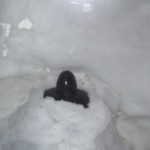
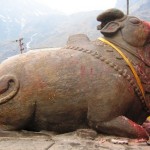
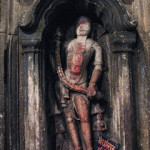
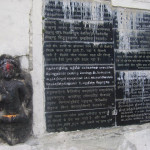
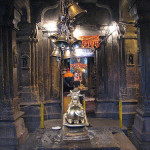
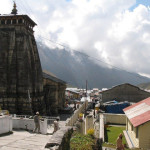
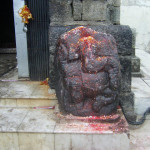
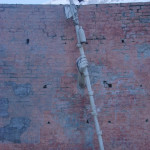
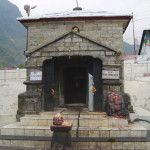
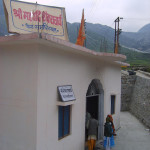
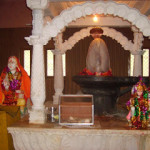
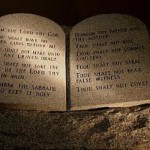
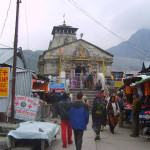
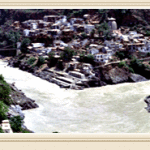
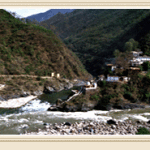
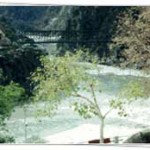
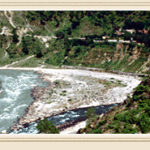
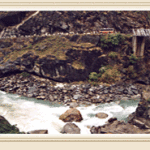
Good
I want to be a permanent member of mandir trust because i am very much devoted in Lord shiva and also want to know the procedure to become permanent member and donations
very nice information Very Good
Thanku for this religious yatra darshan with the help of amazing photographs